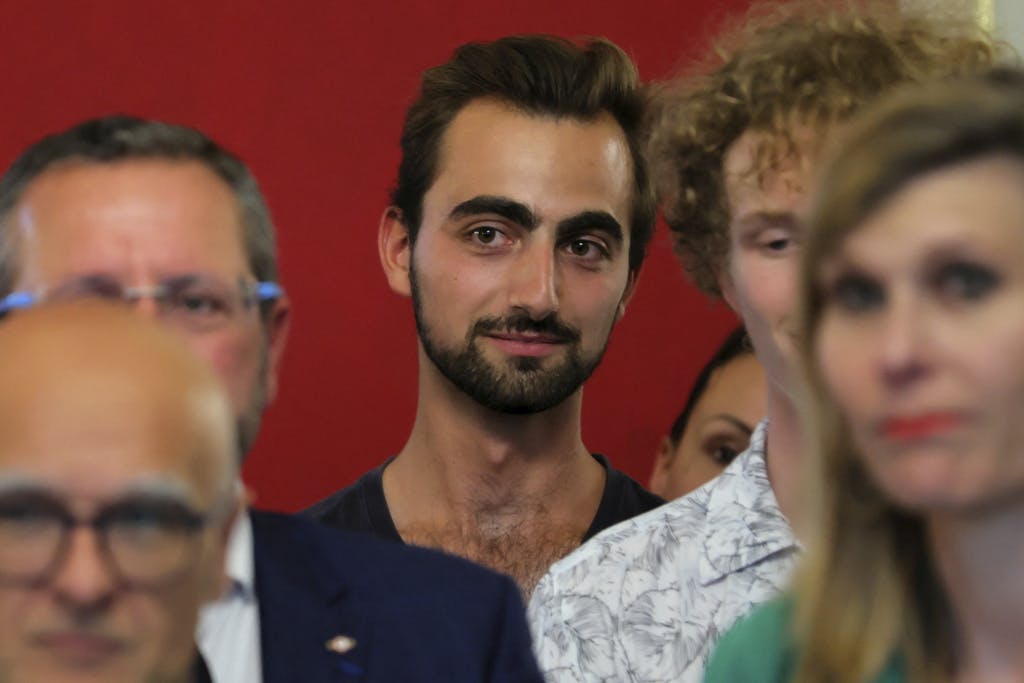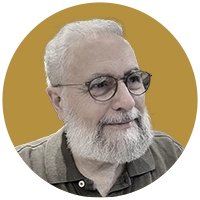How a ‘Backpack Hero,’ Age 24, Will Be Made a Knight of the Legion of Honor by President Macron
And why the president is so eager to enroll the youngster for a new, so to speak, crusade.

Henri d’Anselme, 24, France’s “backpack hero,” will be made a knight of the Legion of Honor by President Macron on July 14, Bastille Day. The young man became on June 8 instantly famous as he twirled one of his two backpacks to chase away from a public park a Syrian migrant, Abdelmasih Hanun, who had just stabbed four infant children and two senior citizens. The scene, which took place at Annecy, in the French Alps, was captured on a smartphone video and went viral.
It was refreshing, to say the least, to watch an ordinary young person standing up against a gruesome aggression. Ever since, the French have been celebrating Mr. d’Anselme’s moral and physical courage. All the more so since France, once one of the safest countries in Europe, has been descending in recent years into a routine of crime and violence.
Think of it. One June 12, four persons were seriously injured in a street shooting at Marseille, France’s major harbor on the Mediterranean. Two of them are still hovering between life and death. Three weeks earlier, on May 21, three men were shot to death in the same city. No less than 23 persons have been killed at Marseille since January 1 this year.
On June 11, two people were wounded under similar circumstances in a shooting at Besançon, Eastern France. On June 6, six people were shot at Grenoble, in the Southern French Alps. At this rate, 2023 may surpass 2022, a year in which, according to the Ministry of the Interior, thousands of people nation-wide were involved in war-like violence, and 948 of them — a daily average of 2.5 — were killed.
No place is spared. While Paris and some 20 cities are reported as particularly dangerous, with more than 100 criminal incidents for 1,000 inhabitants, a conservative senator, Stéphane Sautarel, pointed to a steady increase of insecurity and violence in rural areas as well. It has reached a 25 percent yearly rate in several départements in Southern France, including Cantal, which Mr. Sautarel represents.
What about the rise of ad hominem political violence? On May 15, a gang of radical youths pummeled Jean-Baptiste Trogneux, a chocolate producer in Amiens, in Northern France, for no other reason than distant family links with Brigitte Macron, the wife of the French president. On April 27, another young radical launched a smoke flare against the president’s helicopter in Britany.
Some 900 mayors and other elected officials or political leaders have reported being threatened or physically attacked over the first five months of 2023. No wonder that against such a deleterious background, the soon-to-be-knighted Henri d’Anselme really looks like the White Knight.
The issue, however, may be that he is too white. That the Annecy incident fits in too well with conservative tropes about the dangers of mass non-European immigration and the need, among Europeans, for a moral restoration.
Technically, the Annecy aggressor, Abdelmasih Hanun, is an Eastern Christian refugee, who fled Syria at the onset of the civil war, in 2011, and was granted by Sweden “subsidiary protection,” a minor form of asylum, until 2025. Although he was married for a while to a Swedish-Syrian woman (they have a daughter), he was personally denied Swedish citizenship.
When Mr. Hanun moved to this country after his divorce he was denied asylum in France, since European regulations tie refugees and asylum seekers to the country where they were admitted first. Moreover, there are inconsistencies in his personal narrative, and some officials wonder whether he is not in fact a Muslim under Christian disguise. The name Abdelmasih means “the servant of Christ” in Arabic and is used only by Christians. He wore a cross on his chest and Christian religious images were found in his pockets when he was arrested.
However, the image Mr. Hanun projected on June 8, including the turban he wore and the way he shouted “In the name of Jesus” while attacking his victims, seems to follow a radical Islamic pattern.
Whatever Hanun’s identity and itinerary, his case underlines the difficulties embroiled in mass migration or immigration to Europe, either legal or illegal, from culturally different non-European countries.
Foreign nationals — seven percent of the global French population according to Insee, the national data institute, most of them from Africa and the Middle East — account for 25 percent of all violent crimes. If foreign-born French citizens or second-generation immigrants are included, the ratio is close to 70 percent.
The contrast with Henri d’Anselme could not be starker. The second of six siblings, backpack hero Henri — an athletic young man sporting a thin brown beard — is the grandson of a four star army general and the grand-grandson of another general who took an active part in ORA, the military Resistance network against the German occupation in Metropolitan France.
He was raised as a Christian patriot: from a private, Catholic school and highschool near Paris to Scouts d’Europe, the most conservative branch of French Catholic scouting, to IPC, a private Catholic university in Paris. One book that left on him an “indelible imprit” is “The Camp of the Saints,” by Jean Raspail, a prophetic if highly controversial novel about a migrant crisis in Europe published in 1972.
When interviewed by the press about his intervention against Mr. Hanun, he insisted “he just did instinctively, just as every Frenchman would have done.” “Frenchman” may be understood here as “of ethnic French origin,” rather than as “citizen of France”.
There is even more to this profile. The reason Henri was in Annecy on that very day, and was carrying two backpacks, is that he had just started a walking tour of France, in order to visit the country’s 160 cathedrals and comment on them on Instagram and Tik-Tok (130,000 followers last week): Saint-Pierre-aux-Liens, Annecy’s 16th century cathedral, happened to be on his way.
Quite an unusual undertaking, even if it parallels two highly popular European pilgrimages: the Compostella trail, that traces back to the 11th century, and the yearly Chartres cathedral pilgrimage initiated by the philosopher and poet Charles Péguy in the early 20th century.
Naturally, the conservative political class and press feel vindicated by the whole Annecy episode and Henri’s figure, whereas liberals and leftwingers are of two minds : they realize they cannot criticize the cathedrals’ lover so far, but would like to bring him down to size.
As for President Macron, the perpetual advocate of a fusion political culture that would blend conservative and liberal priorities and symbols, he is eager so far to enroll Henri for a crusade he just launched against anomie, crime and “decivilization.”

